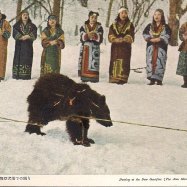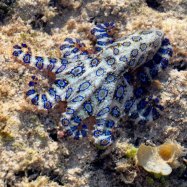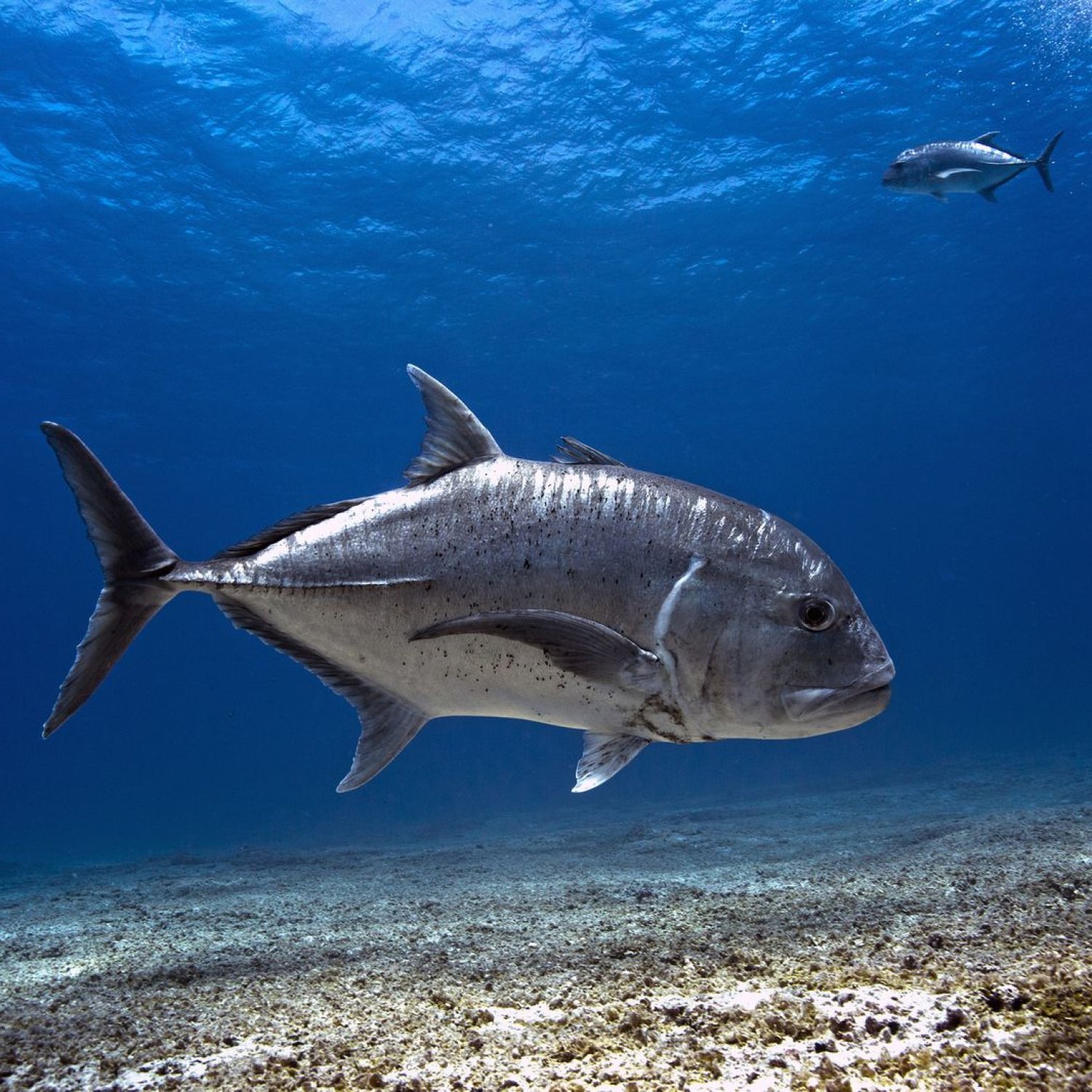
Giant Trevally
Up to 1 meter
The Giant Trevally, a popular game fish found in the Eastern Indian Ocean and Western Pacific Ocean, can grow up to 1 meter in length. It belongs to the Carangidae family and has a streamlined and elongated body shape. Known for its strength and speed, it's a favorite among anglers and a key predator in its habitat. #GiantTrevally #Carangidae #Fishing
Animal Details Summary:
Common Name: Giant Trevally
Kingdom: Animalia
Habitat: Coastal waters, coral reefs, estuaries
The Mighty Giant Trevally: A Predator of the Seas
As the sun glistens on the crystal clear waters, a shadow lurks beneath the surface. Suddenly, a fierce predator bursts out of the water with a loud splash, its silver body reflecting the sunlight. This is the elusive Giant Trevally (Caranx ignobilis), a powerful and magnificent fish that roams the tropical waters of the Indo-Pacific region.Also known as the Giant Kingfish, Barrier Trevally, or simply GT, this species belongs to the animal kingdom, specifically the phylum Chordata and class Actinopterygii Giant Trevally. It is part of the order Perciformes and family Carangidae, which includes other popular game fish such as the Yellowtail Amberjack and the Greater Amberjack.
Native to the waters of Australia, the Giant Trevally can be found in the eastern Indian Ocean and the western Pacific Ocean. With its wide geographical distribution, it has become a popular target for anglers and a prized catch in sport fishing.
Habitat and Feeding Behavior
The Giant Trevally can be found in coastal waters, coral reefs, and brackish estuaries, making it a versatile and adaptable fish. It is known to have a wide-ranging diet, earning its classification as a carnivore. Its sharp teeth and powerful jaws allow it to feed on a variety of prey, including fish, crustaceans, and even seabirds.One of the fascinating hunting behaviors of the Giant Trevally is its ability to change color to blend in with its surroundings. This allows it to surprise its prey, making it a highly effective ambush predator. Its silver body with dark grey or black patches also helps it camouflage in the changing water conditions, making it challenging to spot for both prey and predators Groenendael.
Physical Appearance and Size
The Giant Trevally is a muscular and streamlined fish with an elongated body, allowing it to reach incredible speeds in the water. It has a thick and sturdy tail fin for powerful propulsion, making it an agile hunter.This species can grow up to 1 meter in length and weigh over 80 pounds, with females usually being larger than males. Juvenile Giant Trevallies have a different appearance, with a distinct pattern of round spots on their bodies. As they mature, these spots fade, leaving a solid silver body with darker markings.
Cultural Significance
In many cultures, the Giant Trevally holds significant value, both as a game fish and for its connection to tradition and mythology. In Hawaii, this species is known as the Ulua and is considered a sacred fish, often depicted in ancient petroglyphs.In some Pacific islands, the Giant Trevally is considered a symbol of strength and courage, with legends of the fish being able to communicate with the gods. It is also an important food source for many coastal communities, with its meat being high in protein and rich in flavor.
Threats and Conservation Efforts
Like many marine species, the Giant Trevally faces threats from overfishing and habitat destruction. It is a highly sought-after game fish among sport fishermen, and its popularity in the culinary world also puts it at risk of overexploitation.To protect this magnificent fish, many countries have implemented regulations on fishing for the Giant Trevally. In some parts of the world, catch-and-release policies have been implemented to preserve the population of this species. Conservation efforts also focus on protecting its natural habitat, such as coral reefs and estuaries, from human impact.
Discovering the Giant Trevally in the Wild
To witness the beauty and power of the Giant Trevally in its natural habitat is truly a memorable experience. Snorkeling or diving in the tropical waters of the Indo-Pacific region, you may spot these majestic fish swimming in schools or hunting alone.To observe this species up close, many enthusiasts also visit aquariums and marine parks that feature the Giant Trevally in their exhibits. Seeing this fish in captivity allows people to appreciate its unique appearance and understand the importance of preserving its natural habitat.
In Conclusion
The Giant Trevally is not only a formidable predator of the seas but also a fascinating and culturally significant species. Its ability to adapt to various environments and hunt with remarkable stealth and agility has made it a highly sought-after game fish and a symbol of strength and courage in many cultures.While it faces threats from human activities, efforts to protect and conserve the Giant Trevally give hope for its survival. As we continue to learn more about this magnificent creature, let us also strive to preserve its home in the wild for future generations to appreciate and admire.

Giant Trevally
Animal Details Giant Trevally - Scientific Name: Caranx ignobilis
- Category: Animals G
- Scientific Name: Caranx ignobilis
- Common Name: Giant Trevally
- Kingdom: Animalia
- Phylum: Chordata
- Class: Actinopterygii
- Order: Perciformes
- Family: Carangidae
- Habitat: Coastal waters, coral reefs, estuaries
- Feeding Method: Carnivorous
- Geographical Distribution: Indo-Pacific region
- Country of Origin: Australia
- Location: Eastern Indian Ocean and Western Pacific Ocean
- Animal Coloration: Silver with dark grey or black patches
- Body Shape: Streamlined and elongated
- Length: Up to 1 meter
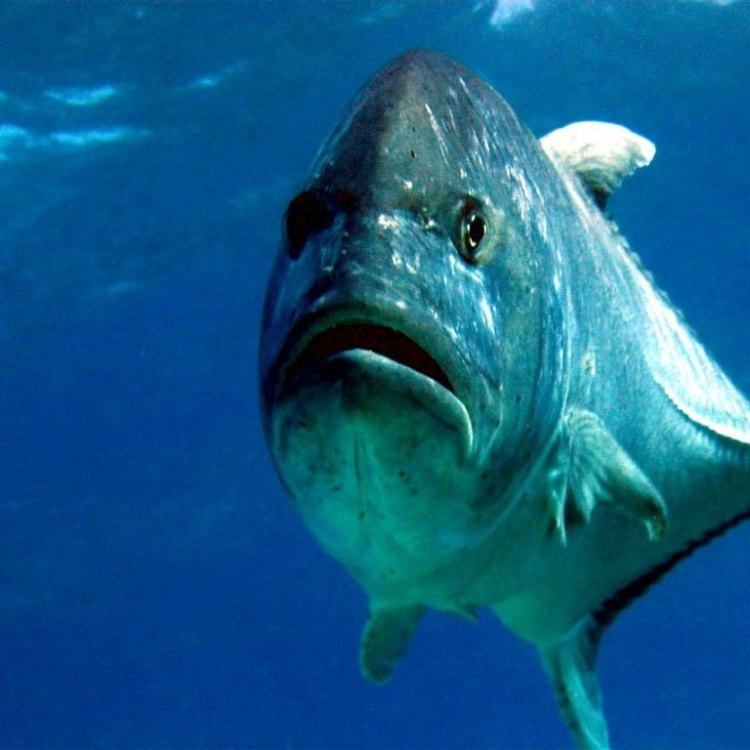
Giant Trevally
- Adult Size: Up to 40 kg
- Average Lifespan: Up to 35 years
- Reproduction: Sexual
- Reproductive Behavior: Spawning
- Sound or Call: Not known to make sounds or calls
- Migration Pattern: Migratory
- Social Groups: Solitary or in small groups
- Behavior: Aggressive and powerful swimmers
- Threats: Overfishing, habitat destruction, and climate change
- Conservation Status: Least Concern
- Impact on Ecosystem: Top predator
- Human Use: Commercial and recreational fishing
- Distinctive Features: Large size, wide head, and forked tail
- Interesting Facts: Known for their strength and speed, they are also called the 'gangsters of the reef'. They are highly prized by sport fishermen.
- Predator: Sharks, other large predatory fish
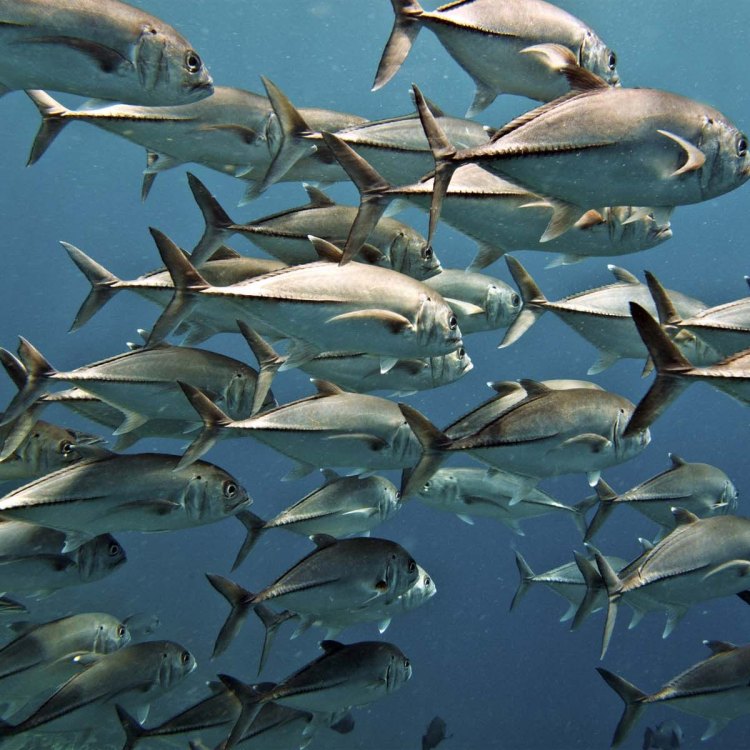
Caranx ignobilis
The Mighty Giant Trevally: Gangsters of the Reef
The deep blue sea is home to some of the most fascinating and awe-inspiring creatures. Among these is the Giant Trevally, a powerful and elusive fish that roams the tropical and subtropical waters of the Indo-Pacific region. It's no surprise that this giant predator has captured the attention of fishermen and marine enthusiasts alike.With an average weight of up to 40 kilograms and a maximum lifespan of 35 years, the Giant Trevally is a true giant of the sea PeaceOfAnimals.Com. But what makes this fish stand out from the rest? From its distinctive features to its fascinating behavior, there is so much to discover about this incredible fish.
Distinctive Features
The Giant Trevally, scientifically known as Caranx ignobilis, is easily recognizable by its large size, wide head, and forked tail. It has a silvery-grey body with dark spots and a yellowish tint on its fins. Its head is big and its jaw is equipped with sharp, pointy teeth, serving as a warning of its predatory nature.
This fish has a streamlined and strong body, allowing it to be a speedy swimmer and an aggressive hunter. Its muscular build is crucial for its impressive strength, which it uses to overpower its prey. With its impressive physical features, the Giant Trevally can strike fear into the hearts of even the most seasoned ocean dwellers.
Reproduction and Behavior
Like most fish, the Giant Trevally's reproduction is sexual, where eggs are fertilized internally and then released into the water. However, what's interesting about their reproductive behavior is their spawning patterns Ghost Crab. These fish are known to gather in large numbers and release their eggs and sperm simultaneously in a phenomenon called "spawning aggregations." While this behavior is not unique to Giant Trevallies, it is still a fascinating sight to witness.
Apart from their mating rituals, these fish have other interesting behaviors. They are known to be aggressive and powerful swimmers, often using their brute strength to catch their prey. They are also solitary or in small groups, making them difficult to spot in the vast ocean. This elusive nature only adds to their mysterious allure.
Threats and Conservation Status
Unfortunately, like many other marine creatures, Giant Trevallies face various threats to their survival. Overfishing is one of the biggest threats, as these fish are highly sought after for commercial and recreational fishing. As a result, their population has significantly declined over the years.
Habitat destruction, caused by pollution and climate change, is also a major concern for these fish. This destruction not only affects the Giant Trevally but also disrupts the balance of the entire ecosystem. With their status as top predators, the decline of Giant Trevallies can have a domino effect on other species, causing detrimental consequences to the ecosystem.
However, despite these challenges, the International Union for Conservation of Nature (IUCN) has classified the Giant Trevally as "Least Concern" in terms of conservation status. This means that their population is still relatively stable, but it is essential to address the threats they face to maintain this status.
Impact on the Ecosystem
As mentioned earlier, Giant Trevallies are top predators in the ocean, and their presence is crucial to maintaining a balanced ecosystem. They are known to feed on a variety of smaller fish and even some crustaceans, making them important in controlling the population of these species. In turn, this helps to maintain a healthy marine environment.
Moreover, these fish also aid in the dispersal of nutrients in the ocean. Their movements and feeding activities help to circulate nutrients, which are essential for the growth and survival of other marine creatures. Simply put, Giant Trevallies play a vital role in maintaining the delicate balance of the ocean's delicate ecosystem.
Human Use
The Giant Trevally is an important fish for both commercial and recreational fishing purposes. Its large size and strength make it a prized catch for sport fishermen, who often spend hours trying to catch this elusive giant. However, this is also one of the contributing factors to the decline in their population.
In some cultures, this fish is also used for food, and different parts of the world have various recipes for cooking Giant Trevallies. Its firm and flavorful flesh make it a sought-after fish in many seafood markets. However, with the decline in their numbers, it is essential to ensure sustainable fishing practices to prevent their extinction.
Interesting Facts
Aside from its distinctive features and behavior, there are many intriguing facts about Giant Trevallies that make them stand out from other fish. For starters, they are well-known for their strength and speed, earning them the nickname "gangsters of the reef." They have been observed to reach speeds of up to 80 km/h, making them a challenging catch for even the most experienced anglers.
Also, Giant Trevallies are known to communicate with each other through subtle body movements and changes in coloration. This form of non-verbal communication is essential for their survival, particularly during mating and hunting.
Predators
Despite their size and strength, Giant Trevallies have some formidable predators in the ocean. Sharks, particularly the Great White Shark, are known to prey on these fish. Other large predatory fish such as tuna, barracuda, and moray eels also pose a threat to Giant Trevallies.
However, with their impressive size and speed, these fish are not an easy target, and they can often outrun their predators. Nevertheless, the ocean is a dangerous place, and even the mighty Giant Trevally is not immune to its perils.
Conclusion
In conclusion, the Giant Trevally is a truly remarkable and fascinating fish. From its distinctive features to its behavior, it is a creature that demands respect and awe. However, like many other marine creatures, Giant Trevallies face numerous threats that can potentially lead to their extinction. It is our responsibility to protect these incredible creatures and ensure the survival of not just the Giant Trevally but also the delicate ecosystem that it plays a vital role in. So the next time you spot a Giant Trevally swimming in the ocean, take a moment to appreciate its beauty and significance in the vast ocean world.
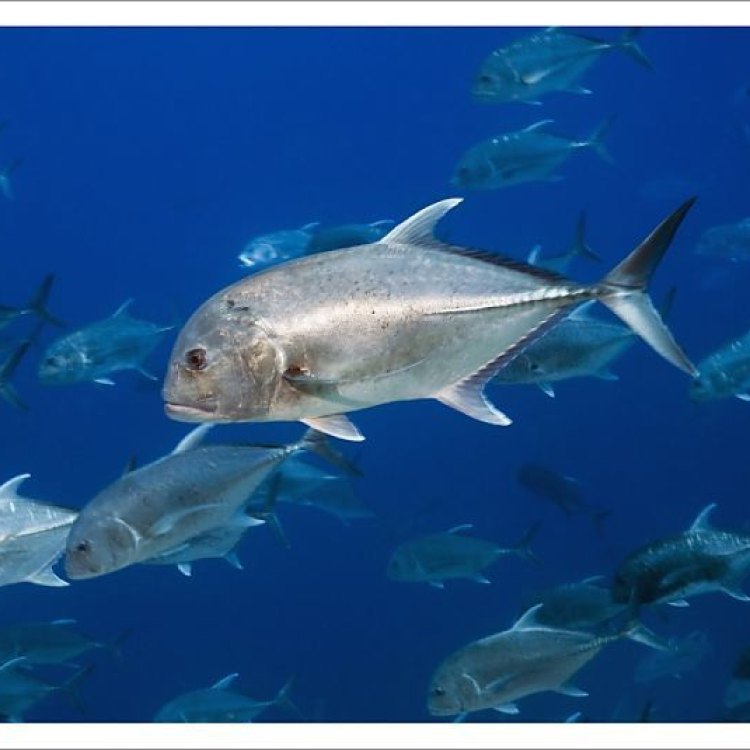
The Mighty Giant Trevally: A Predator of the Seas
Disclaimer: The content provided is for informational purposes only. We cannot guarantee the accuracy of the information on this page 100%. All information provided here may change without prior notice.









